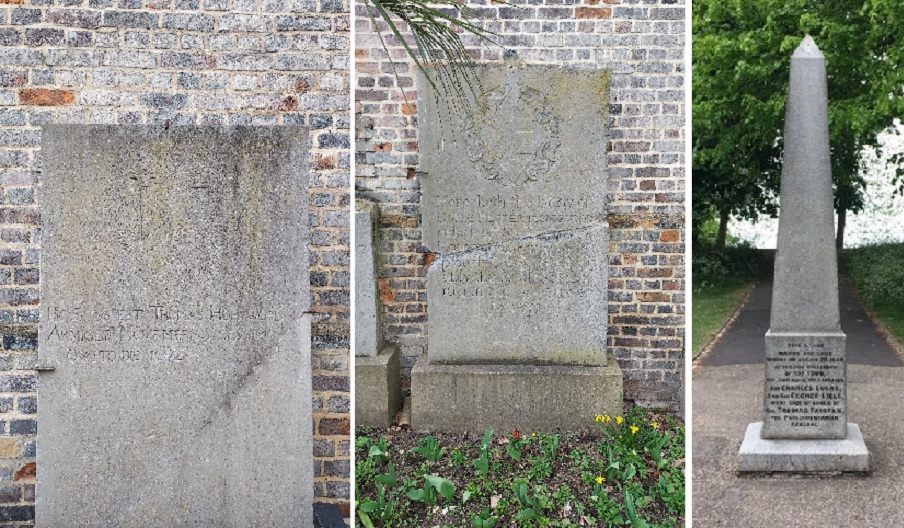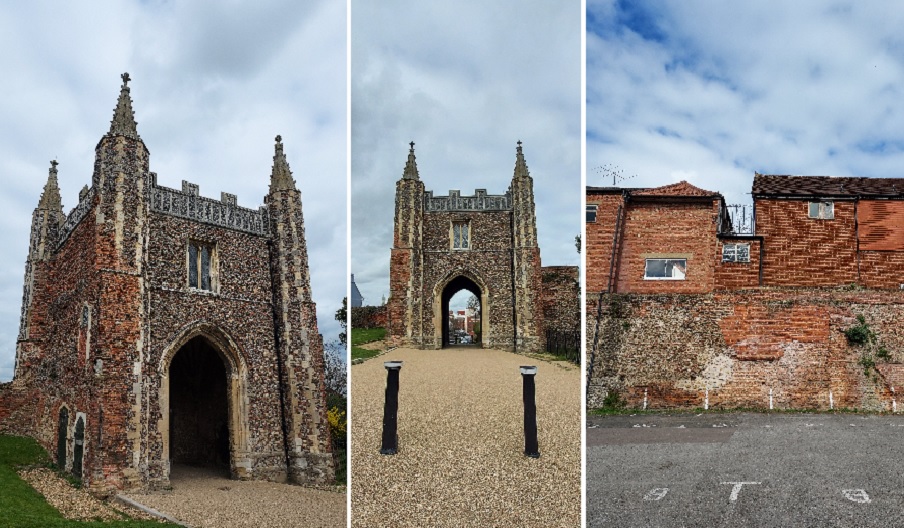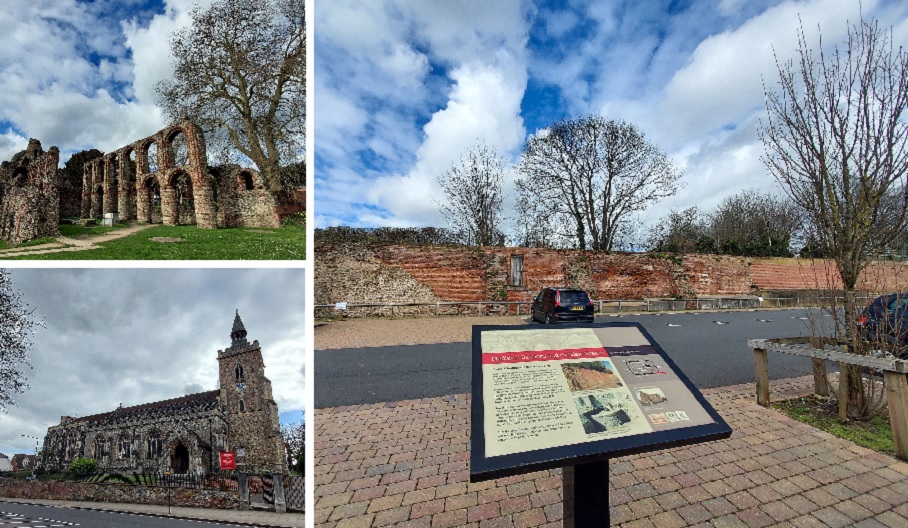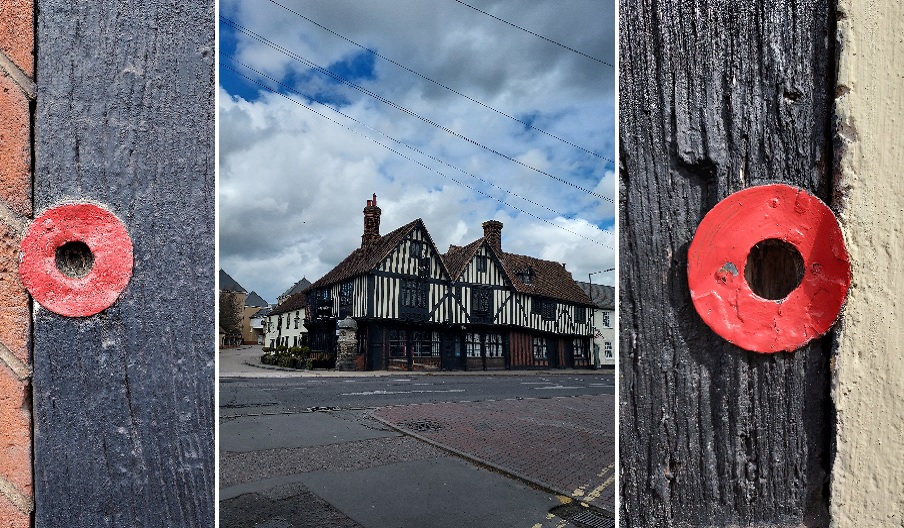We’ve all heard of the English Civil War – but have you heard that towards the end of this conflict, Colchester was under siege for 12 weeks? Royalist soldiers holed up in the town to avoid defeat and capture by the Parliamentarian forces, and the townspeople were trapped inside the town walls with them.
To the modern day visitor, that all seems like a long time ago, but almost 400 years on, the marks of the siege can still be seen around the town today. One of the Visit Colchester team members took a walk to explore the sites of some of the dramatic events that took place here in the summer of 1648, following the new Siege of Colchester walking trail.

This walk starts beside the Visitor Information Centre, by looking at the gravestones of Sir Thomas Honywood & his wife, who lived during the time of the siege at Marks Hall in nearby Coggeshall. Honywood was a Parliamentarian Officer who was ordered to tear down the Roman town walls at the end of the siege – but his wife spoke up in their defence, and it is because of her that the destruction of them was kept to a minimum and we still have a town wall to be proud of today.
The trail then lead me to the obelisk behind Colchester Castle. When you spot the obelisk, you are immediately drawn to this strange grey shape seemingly poking out of the ground, as you approach and read the inscription, that it marks the spot of a double execution of Sirs Lucas & Lisle, Royalist Officers who fought in the Civil War and siege, the whole space takes on a more eerie feeling.

I exited the park through the Dutch Quarter, it's amazing to think that many of these houses were standing during the siege and have continued to be lived in ever since. If those walls could talk I’m sure they would tell some excellent stories. The first church on the trail is here, St Martin’s, which suffered the loss of it’s tower during Parliamentarian bombardment and was never rebuilt.
A short walk along the High Street & then Head Street takes us to another church that bears the scars of conflict. St Mary’s tower was also damaged during the fighting, as a Royalist cannon was mounted atop of it to hold back advancing Parliamentarian soldiers. You can understand even today that this was an important defensive position, with views to the south/west of the town, tucked just behind the town wall. The cannon was destroyed, the gunner killed, but the tower was eventually rebuilt and you can see the change in building materials where it was patched up.
A short walk away, the former Kings' Head Inn (now a solicitor's office) was the site of official surrender. The Royalists ended the siege because they had no ammunition left and the townspeople were starving. Their surrender to the Parliamentarian General, Sir Fairfax put into motion the end of the siege, and the execution of the Royalist Officers behind the Castle.
On the way to the next landmark on the trail, the map takes you via the site of the Headgate, where a town gate once stood and was the site of intense fighting at the beginning of the siege. A plaque now marks the site, but you are more likely to be coming to this area to catch a bus, go to a restaurant or the cinema than to go into battle.

I live close by to the St John's Abbey Gate, and often wonder about the building it used to lead to. This land was owned by Sir Lucas’ family at the time of the siege, and the gate house was used to store ammunition. Walking through today, its difficult to believe that it was blown up by a grenade and the roof was completely lost. Thank goodness it was restored in 1863.
Walking back into the town centre, towards the next location marked on the map, the trail leads you past a section of the Roman town wall which runs through Vineyard Street Car Park. As I walked beside it, I was very thankful for Mrs Honywood’s decision to ask her husband to save it! The town would be so different without it.

St Botolph's Priory is a beautiful ruin – although it was already out of use at the time of the siege, part of it was still used as a church. Imagine how beautiful the building was before it was damaged during the fighting.
There is an interpretation panel on site to help you get an idea of how the Priory looked in it’s glory days. Wandering about under the remaining arched windows and amongst the graveyard gives you an idea of the size of the place, and how grand it must have been before the very destructive event.
Much further along Priory Street, the trail leaflet points out the Berryfield breach, a now repaired part of the town wall, this is where Parliamentary forces blew a massive hole in the wall with their cannons towards the end of the siege.
Priory Street turns into East Hill, and on this hill stands St James' Church, the final church on the map. (Make sure you turn left and head up the hill, or you could miss it!) This is where the Royalist soldiers were forced to hand over their weapons to the Parliamentarians after surrender. I had a sombre thought, that is where they stopped being soldiers and became prisoners.

At the bottom of East Hill & just across the river Colne, sits the Old Siege House. This was the site of a huge fight between the Royalists & Parlimentarians – the red circles on the timbers of the building outline the bullet holes that their muskets left behind. It’s now a restaurant and is much more hospitable – I would recommend a visit once Covid-19 restrictions allow.
From the Siege House you can return to the town centre by heading back up East Hill, or retreat into the bottom of Castle Park along the riverside to avoid the steep climb!
You can download the Siege of Colchester walking trail from our website HERE, or buy a physical copy from the Visitor Information Centre on the ground floor of Hollytrees Museum in Castle Park from Monday 12th April.





Visit https://datarecoveryinusa.com/rdr/orange-county-ca/ Best Data Recovery Specialists in Orange County